10 Most Beautiful Cities To Visit In Dominican Republic | Best Cities To Visit In Dominican Republic

- By
- Aparna Patel
- |
- 22 Jun, 2023
- |
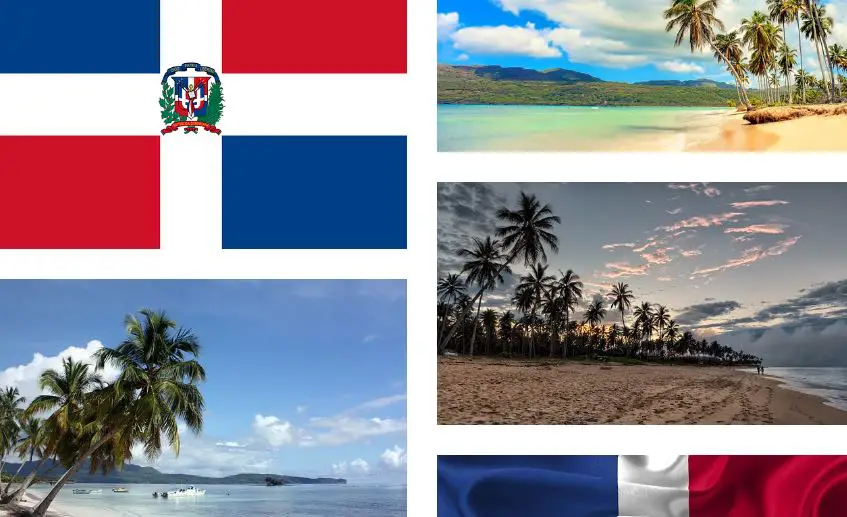
The Dominican Republic is a captivating Caribbean destination renowned for its stunning beaches, vibrant culture, and warm hospitality. While the country is celebrated for its breathtaking coastal towns, it also boasts several beautiful cities that offer a unique blend of history, culture, and natural beauty.
From colonial architecture to vibrant city life, these urban gems have much to offer for travelers seeking a diverse experience. Join us as we explore the 10 most beautiful cities to visit in the Dominican Republic, each with its own charm and allure. Get ready to immerse yourself in the rich heritage, picturesque landscapes, and captivating cityscapes that await you in this enchanting Caribbean nation.
Beautiful Cities To Visit In Dominican Republic
1.Santo Domingo
Visiting Santo Domingo, the capital city of the Dominican Republic, offers a wealth of cultural, historical, and architectural attractions. Here are some highlights of visiting Santo Domingo: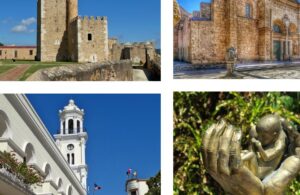
- Zona Colonial: Explore the UNESCO World Heritage site of the Zona Colonial, the oldest colonial city in the Americas. Wander through its narrow cobblestone streets and marvel at the well-preserved Spanish colonial architecture.
- Alcázar de Colón: Visit the Alcázar de Colón, the former residence of Christopher Columbus’ son Diego. It is now a museum showcasing colonial-era artifacts and offering insights into the history of the region.
- Cathedral of Santa María la Menor: Discover the first cathedral built in the Americas, the Cathedral of Santa María la Menor. Its stunning architecture and historical significance make it a must-visit landmark.
- Museo de las Casas Reales: Immerse yourself in the history of the Dominican Republic at the Museo de las Casas Reales. This museum displays artifacts and exhibits related to the colonial period and the history of the island.
- Malecón: Take a stroll along the Malecón, a picturesque waterfront promenade offering stunning views of the Caribbean Sea. Enjoy the vibrant atmosphere, street vendors, and local artists.
- National Palace: Marvel at the grandeur of the National Palace, the seat of the Dominican government. Although entry is restricted, the impressive architecture and surrounding gardens are worth a visit.
- Mercado Modelo: Experience the local culture and shop for crafts, artwork, and souvenirs at Mercado Modelo, a bustling market in the heart of the city.
- Plaza de la Cultura: Explore the Plaza de la Cultura, a cultural complex that houses several important institutions, including the National Theater, Museum of Modern Art, and the National Library.
- Los Tres Ojos: Venture just outside the city to Los Tres Ojos, a natural wonder consisting of three interconnected limestone caves with beautiful underground lakes. Take a boat ride and admire the captivating surroundings.
- Santo Domingo Nightlife: Enjoy the vibrant nightlife of Santo Domingo. The city offers numerous bars, clubs, and restaurants where you can dance to lively merengue and bachata music, sample delicious local cuisine, and mingle with locals and tourists alike.
2.Punta Cana
When traveling to Punta Cana, a popular tourist destination in the Dominican Republic known for its beautiful beaches and luxurious resorts, here are some key points to consider: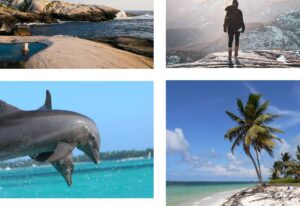
- Beaches: Punta Cana is famous for its stunning beaches with powdery white sand and turquoise waters. Spend time relaxing on Bavaro Beach, Playa Macao, or Playa Juanillo, and indulge in various water sports activities like snorkeling, scuba diving, or jet skiing.
- Resorts: Punta Cana offers a wide range of luxurious all-inclusive resorts that cater to different budgets and preferences. These resorts typically provide various amenities such as pools, restaurants, spa facilities, and entertainment options.
- Ecotourism: Explore the natural beauty of Punta Cana beyond the beaches by engaging in ecotourism activities. Visit the Indigenous Eyes Ecological Park and Reserve, a protected area featuring walking trails, freshwater lagoons, and diverse flora and fauna.
- Golf: Punta Cana is a golfer’s paradise, with numerous world-class golf courses designed by renowned architects. Enjoy a round of golf in picturesque settings with ocean views and lush tropical landscapes.
- Excursions: Take advantage of the proximity to other attractions in the region by joining day trips or excursions. Visit Saona Island, a tropical paradise with pristine beaches, or explore the historic town of Altos de Chavón with its Mediterranean-inspired architecture.
- Nightlife: Punta Cana offers a vibrant nightlife scene with numerous bars, clubs, and beach parties. Experience the energetic atmosphere, enjoy live music, and dance the night away to Caribbean rhythms.
- Local Cuisine: Sample the delicious Dominican cuisine during your visit to Punta Cana. Try traditional dishes like sancocho (a hearty stew), mofongo (mashed plantains), and fresh seafood specialties.
- Shopping: Explore the local markets and shopping centers in Punta Cana for souvenirs, local crafts, and unique Dominican products. The Palma Real Shopping Village and Plaza Bavaro are popular shopping destinations in the area.
- Water Parks and Adventure Parks: Families traveling with children can enjoy the various water parks and adventure parks in Punta Cana. Scape Park and Manatí Park are great options for zip-lining, animal encounters, and thrilling water slides.
- Safety: Like any travel destination, it is important to take necessary precautions and be mindful of your personal belongings. Follow safety guidelines, use reputable transportation services, and stay informed about any local advisories or regulations.
3.Puerto Plata
Puerto Plata is a popular tourist destination located on the northern coast of the Dominican Republic. Known for its beautiful beaches, vibrant culture, and historical landmarks, Puerto Plata offers a variety of attractions and activities for visitors. Here’s some information that may be helpful for planning your visit: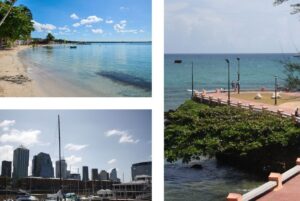
- Getting there: The nearest international airport is Gregorio Luperón International Airport (POP), located about 15 minutes away from Puerto Plata. You can find flights from various destinations to this airport.
- Best time to visit: The climate in Puerto Plata is tropical, with warm temperatures year-round. The peak tourist season is from December to April when the weather is dry and temperatures are pleasant. However, this period also tends to be more crowded and prices can be higher. If you prefer fewer crowds, consider visiting during the shoulder seasons of May to June or September to November.
- Beaches: Puerto Plata is famous for its stunning beaches. Playa Dorada is a popular choice, offering soft sand, clear waters, and a range of water sports activities. Cofresi Beach is another beautiful option, known for its calm waters and picturesque surroundings. Sosua Beach, located nearby, is renowned for its vibrant marine life, making it a great spot for snorkeling and diving.
- Cable Car to Mount Isabel de Torres: One of the iconic attractions in Puerto Plata is the cable car ride to Mount Isabel de Torres. From the top, you can enjoy panoramic views of the city and the coastline. There’s also a botanical garden and a replica of Christ the Redeemer statue that you can explore.
- Historic sites: Puerto Plata has a rich history, and there are several historical sites worth visiting. Fortaleza San Felipe is a 16th-century fortress that offers insights into the area’s colonial past. The Amber Museum showcases the Dominican Republic’s rich amber deposits and provides information about the history and formation of amber.
- Water activities: Besides the beaches, Puerto Plata offers plenty of opportunities for water-based activities. You can go snorkeling, scuba diving, or take boat tours to explore nearby coral reefs and marine life. Deep-sea fishing charters are also available if you enjoy angling.
- Other attractions: Don’t miss out on exploring the vibrant Malecón, a seaside promenade lined with restaurants, shops, and entertainment venues. Ocean World Adventure Park is another popular attraction, offering interactive experiences with marine animals like dolphins and sea lions.
- Day trips: Puerto Plata serves as a gateway to various day trip destinations. You can visit the nearby town of Cabarete, famous for its water sports and lively nightlife. The 27 Charcos (27 Waterfalls) in Damajagua is a natural attraction where you can hike and swim in a series of cascading waterfalls.
4.Samaná
Samaná is a stunning peninsula located on the northeastern coast of the Dominican Republic. Known for its breathtaking landscapes, pristine beaches, and natural wonders, Samaná offers a unique and picturesque destination for travelers. Here’s some information to help you plan your trip: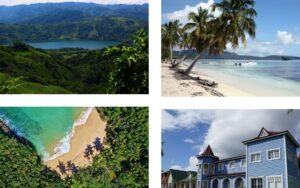
- Getting there: The main airport serving Samaná is Samaná El Catey International Airport (AZS), which receives international flights from select destinations. Alternatively, you can fly into Santo Domingo’s Las Americas International Airport (SDQ) and take a bus or private transportation to Samaná, which is approximately a 2-3 hour drive.
- Best time to visit: Samaná enjoys a tropical climate, with warm temperatures year-round. The peak tourist season runs from December to April when the weather is typically dry and pleasant. However, if you prefer fewer crowds and lower prices, consider visiting during the shoulder seasons of May to June or September to November.
- Beaches: Samaná is home to some of the most beautiful beaches in the Dominican Republic. Playa Rincón is often regarded as one of the country’s finest beaches, with its long stretch of white sand, turquoise waters, and lush surroundings. Playa Cosón is another popular choice, known for its picturesque setting and calm waters. Las Terrenas Beach is a vibrant and lively beach town with stunning beaches, beachfront restaurants, and water sports activities.
- Whale watching: One of the main attractions in Samaná is the opportunity to witness the annual migration of humpback whales. From mid-January to mid-March, thousands of humpback whales gather in the Bay of Samaná to mate and give birth. Whale-watching tours are available during this time, providing a unique and memorable experience.
- Los Haitises National Park: Located near Samaná Bay, Los Haitises National Park is a natural paradise consisting of mangroves, limestone karsts, and numerous caves. You can take boat tours through the park to explore its lush landscapes, encounter diverse bird species, and witness the unique rock formations. The park also has several Taino indigenous pictographs, adding to its cultural significance.
- El Limón Waterfall: A visit to Samaná would not be complete without seeing El Limón Waterfall. This impressive waterfall is nestled within a tropical rainforest, and you can reach it by hiking, horseback riding, or taking a guided tour. Enjoy a refreshing swim in the natural pool at the base of the falls and soak in the beauty of the surrounding lush scenery.
- Las Galeras: If you’re looking for a more laid-back and secluded beach experience, consider visiting Las Galeras. This charming fishing village offers pristine beaches, such as Playa Frontón and Playa Rincón, along with opportunities for snorkeling, diving, and boat trips to nearby Cayo Levantado.
- Samaná Zipline Adventure: If you’re seeking adventure, you can explore the treetops of Samaná’s lush forests on a zipline tour. There are several zipline parks in the area, offering exhilarating rides with stunning views.
5.La Romana
La Romana is a popular tourist destination located on the southeastern coast of the Dominican Republic. Known for its beautiful beaches, golf courses, and luxury resorts, La Romana offers a combination of relaxation, outdoor activities, and cultural experiences. Here’s some information to help you plan your trip: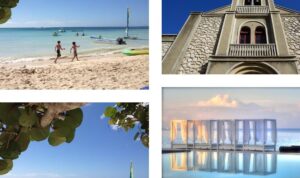
- Getting there: The main airport serving La Romana is La Romana International Airport (LRM), which receives international flights from select destinations. Alternatively, you can fly into Santo Domingo’s Las Americas International Airport (SDQ) and take a bus or private transportation to La Romana, which is approximately a 1.5 to 2-hour drive.
- Best time to visit: La Romana has a tropical climate with warm temperatures throughout the year. The peak tourist season runs from December to April when the weather is typically dry and pleasant. If you prefer fewer crowds and lower prices, consider visiting during the shoulder seasons of May to June or September to November.
- Beaches: La Romana is home to some beautiful beaches that offer opportunities for relaxation and water sports. Bayahibe Beach is a popular choice, known for its crystal-clear waters and vibrant marine life, making it a great spot for snorkeling and diving. Dominicus Beach is another picturesque option, featuring powdery white sand and calm turquoise waters.
- Casa de Campo: This luxury resort complex is a major attraction in La Romana, offering world-class accommodations, golf courses, and a marina. If you’re a golf enthusiast, don’t miss the opportunity to play on the famous Teeth of the Dog golf course, which is consistently ranked as one of the best in the Caribbean. Casa de Campo also features an equestrian center, tennis courts, and a variety of dining and entertainment options.
- Altos de Chavón: Located within the Casa de Campo complex, Altos de Chavón is a replica of a 16th-century Mediterranean village. It features cobblestone streets, charming architecture, artisan shops, art galleries, and a stunning amphitheater. You can explore the village, visit the Regional Museum of Archaeology, and enjoy live performances at the amphitheater.
- Saona Island: A visit to La Romana is not complete without taking a trip to Saona Island. This pristine island, part of the East National Park, offers postcard-perfect beaches, turquoise waters, and lush palm trees. You can take a boat tour or catamaran excursion to Saona Island, where you can swim, sunbathe, enjoy a barbecue lunch, and relax in this idyllic setting.
- Cueva de las Maravillas: Explore the underground world of the Dominican Republic at Cueva de las Maravillas (Cave of Wonders). Located near La Romana, this cave system features impressive rock formations, stalactites, and ancient Taino Indian cave paintings. Guided tours are available to take you through the caves and provide information about their geological and cultural significance.
- Bayahibe: A short distance from La Romana, the fishing village of Bayahibe offers a more laid-back and authentic experience. You can stroll along the waterfront, dine at local seafood restaurants, and arrange boat trips to nearby islands and reefs.
6.Santiago de los Caballeros
Santiago de los Caballeros, commonly referred to as Santiago, is the second-largest city in the Dominican Republic. Located in the Cibao Valley region, Santiago offers a blend of history, culture, and natural beauty. Here’s some information to help you plan your visit: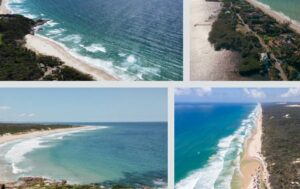
- Getting there: Santiago is well-connected and easily accessible. The nearest international airport is Cibao International Airport (STI), which receives domestic and international flights. You can also reach Santiago by bus from other cities in the Dominican Republic.
- Best time to visit: Santiago has a tropical climate, with warm temperatures throughout the year. The peak tourist season is from December to April when the weather is typically dry and pleasant. If you prefer fewer crowds and lower prices, consider visiting during the shoulder seasons of May to June or September to November.
- Monumento a los Héroes de la Restauración: One of the city’s iconic landmarks is the Monumento a los Héroes de la Restauración (Monument to the Heroes of the Restoration). This grand structure sits atop a hill and offers panoramic views of Santiago. It commemorates the country’s struggle for independence and is a popular spot for visitors to take in the cityscape.
- Centro León: The Centro León is a cultural and arts center dedicated to preserving and promoting the cultural heritage of the Cibao region. It houses art exhibits, historical displays, and a theater. The center provides a comprehensive look into the history, art, and traditions of the area.
- Historic sites: Santiago has a rich colonial history, and you can explore some historic sites in the city. Visit the Catedral de Santiago Apóstol, a beautiful cathedral that dates back to the 19th century. The Fortaleza San Luis is another historical site worth visiting, offering insights into the city’s colonial past.
- Museo del Tabaco: If you’re interested in the country’s famous tobacco industry, the Museo del Tabaco (Tobacco Museum) is a must-visit. It showcases the history, cultivation, and production of Dominican cigars, offering a glimpse into the artistry and craftsmanship behind this renowned product.
- El Centro Cultural Eduardo León Jimenes: This cultural center features contemporary art exhibitions, a library, and a theater. It hosts various cultural events, including music performances, theater shows, and film screenings. Check the center’s schedule to see if any events align with your visit.
- Outdoor activities: Santiago is surrounded by beautiful natural landscapes. You can visit the stunning Aguas Calientes waterfalls, located just outside the city, where you can swim in refreshing natural pools. The Jarabacoa region, known as the “City of Eternal Spring,” is nearby and offers opportunities for hiking, river rafting, and exploring the stunning landscapes of the Dominican Alps.
- Culinary experiences: Santiago is known for its delicious and diverse culinary scene. Don’t miss the opportunity to try traditional Dominican dishes, such as sancocho (a hearty stew), mofongo (mashed plantains), and chicharrón (fried pork). Visit local food markets, street vendors, and restaurants to savor the flavors of the region.
7.Jarabacoa
Jarabacoa, often referred to as the “City of Eternal Spring,” is a picturesque mountain town located in the heart of the Dominican Republic. Known for its stunning natural landscapes, mild climate, and outdoor activities, Jarabacoa is a popular destination for adventure seekers and nature lovers. Here’s some information to help you plan your visit: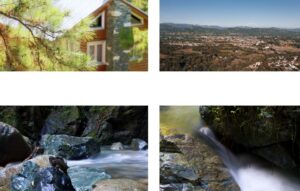
- Getting there: The nearest international airport to Jarabacoa is Cibao International Airport (STI) in Santiago, which is approximately a 1.5 to 2-hour drive away. From Santiago, you can hire a taxi or take a bus to Jarabacoa. Alternatively, private transportation can be arranged from other parts of the country.
- Best time to visit: Jarabacoa enjoys a mild climate year-round, making it a suitable destination to visit at any time. However, the peak tourist season is from December to April when the weather is generally drier. If you prefer fewer crowds and lower prices, consider visiting during the shoulder seasons of May to June or September to November.
- Outdoor activities: Jarabacoa is renowned for its outdoor adventure opportunities. The area is surrounded by lush mountains, rivers, and waterfalls, offering a range of activities to enjoy. Some popular activities include hiking, mountain biking, horseback riding, canyoning, and river rafting. The nearby Jimenoa and Baiguate waterfalls are popular spots for swimming and enjoying the natural beauty of the region.
- Pico Duarte: For those seeking a challenging adventure, consider climbing Pico Duarte, the highest peak in the Caribbean. This trek takes you through stunning landscapes and offers breathtaking views from the summit. It’s recommended to join a guided tour for safety and assistance.
- Salto de Jimenoa: Salto de Jimenoa is a beautiful waterfall located just outside of Jarabacoa. You can hike to the waterfall and take a refreshing swim in its cool waters. The surrounding scenery is picturesque, with lush vegetation and cascading water.
- Rancho Baiguate: Rancho Baiguate is an adventure center that offers a variety of outdoor activities, including zip-lining, horseback riding, and river rafting. You can spend a day here enjoying adrenaline-pumping adventures amidst the natural beauty of Jarabacoa.
- Jarabacoa Ecological Trail: Explore the Jarabacoa Ecological Trail, a scenic pathway that takes you through forests, rivers, and waterfalls. The trail offers opportunities for hiking, birdwatching, and enjoying the peaceful surroundings of the area.
- Balneario La Confluencia: Balneario La Confluencia is a popular river swimming area where two rivers, Yaque del Norte and Jimenoa, converge. It’s a great spot to relax, swim, and have a picnic while enjoying the natural beauty of the surroundings.
- Local cuisine: Jarabacoa is known for its hearty and delicious food. Try traditional Dominican dishes such as “La Bandera” (the flag) – a plate consisting of rice, beans, meat (usually chicken or beef), and salad. Also, don’t miss the opportunity to taste locally grown coffee and fresh tropical fruits.
8.Barahona
Barahona is a captivating province located on the southwestern coast of the Dominican Republic. It is known for its stunning natural landscapes, including beaches, mountains, and lush vegetation. If you’re planning a trip to Barahona, here’s some information to help you make the most of your visit: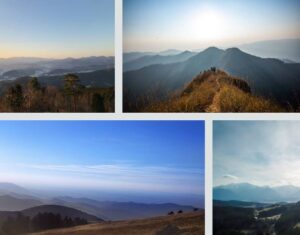
- Getting there: The nearest airport to Barahona is María Montez International Airport (BRX), which receives domestic flights. However, most travelers fly into Santo Domingo’s Las Americas International Airport (SDQ) or Punta Cana International Airport (PUJ) and then take a bus or private transportation to Barahona. The journey from Santo Domingo takes around three to four hours by road.
- Best time to visit: Barahona has a tropical climate with warm temperatures year-round. The dry season, from November to April, is generally considered the best time to visit, as you’ll encounter less rainfall and more sunshine. However, even during the wetter months, the area’s natural beauty is still captivating.
- Beaches: Barahona boasts picturesque beaches with turquoise waters and pristine sand. Playa San Rafael and Playa Los Patos are two popular beaches in the area. Playa San Rafael offers calm waters, ideal for swimming and relaxation, while Playa Los Patos is known for its unique black sand and natural surroundings. Both beaches offer a tranquil atmosphere and stunning coastal views.
- Bahía de las Águilas: One of the main attractions in Barahona is Bahía de las Águilas (Bay of Eagles). This remote and unspoiled beach is considered one of the most beautiful in the Caribbean. It is accessible by boat or a 4×4 vehicle and offers crystal-clear waters, white sand, and a peaceful atmosphere. Make sure to plan a visit to this pristine beach and enjoy its natural beauty.
- Larimar: Barahona is known for its abundance of larimar, a rare blue gemstone found only in the Dominican Republic. You can visit local jewelry shops and workshops to learn about the mining and crafting processes of larimar. Don’t miss the opportunity to purchase unique larimar jewelry or souvenirs as a memento of your trip.
- Enriquillo Lake: Located within the Jaragua National Park, Enriquillo Lake is the largest saltwater lake in the Caribbean. It is home to diverse wildlife, including flamingos, crocodiles, and iguanas. Take a boat tour to explore the lake, marvel at its natural wonders, and observe the fascinating wildlife that inhabits the area.
- Sierra de Bahoruco National Park: This national park is a haven for nature lovers and outdoor enthusiasts. It offers opportunities for hiking, birdwatching, and exploring the diverse flora and fauna of the region. The park is characterized by its rugged mountains, dense forests, and pristine rivers. Don’t forget to bring appropriate gear and hire a local guide for the best experience.
- El Quemaito: El Quemaito is a unique natural phenomenon located near Barahona. It is a thermal beach where warm water springs emerge from the sand, creating small natural hot tubs. Visitors can relax in the warm pools while enjoying the ocean view.
9.Cabrera
Cabrera is a charming coastal town located on the northern coast of the Dominican Republic. Known for its pristine beaches, natural beauty, and relaxed atmosphere, Cabrera offers a tranquil escape for visitors. If you’re planning a trip to Cabrera, here’s some information to help you make the most of your visit: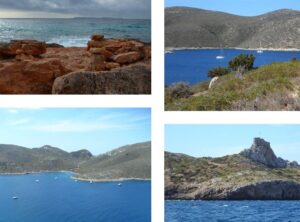
- Getting there: The nearest international airport to Cabrera is Gregorio Luperón International Airport (POP) in Puerto Plata. From the airport, you can hire a taxi or arrange private transportation to reach Cabrera, which is approximately a 1.5 to 2-hour drive away. Alternatively, you can fly into Santo Domingo’s Las Americas International Airport (SDQ) and take a bus or private transportation to Cabrera, which is about a 3 to 4-hour drive.
- Best time to visit: Cabrera enjoys a tropical climate with warm temperatures year-round. The peak tourist season is from December to April when the weather is generally dry and pleasant. If you prefer fewer crowds and lower prices, consider visiting during the shoulder seasons of May to June or September to November.
- Beaches: Cabrera is blessed with beautiful beaches that are less crowded compared to other tourist destinations in the Dominican Republic. Playa Grande is the most famous beach in Cabrera, offering powdery white sand and clear turquoise waters. It’s a great spot for swimming, sunbathing, and enjoying water sports. Playa Diamante and Playa La Entrada are other scenic beaches worth visiting.
- El Dudú Cenote: Located near Cabrera, El Dudú is a natural cenote (sinkhole) that offers a unique swimming experience. The cenote features crystal-clear freshwater pools surrounded by lush vegetation. You can swim in the refreshing waters, jump from cliffs, and explore the underwater caves. It’s a popular spot for adventure seekers and nature enthusiasts.
- Laguna Gri-Gri: Take a boat tour of Laguna Gri-Gri, a mangrove lagoon located near Cabrera. The tour takes you through the mangrove forest, where you can observe various bird species and enjoy the peaceful ambiance of the lagoon. The boat ride also includes stops at natural caves, rock formations, and a beach.
- Golf: Cabrera is home to some excellent golf courses. Play a round of golf at Playa Grande Golf Course, a world-class course designed by Robert Trent Jones Sr. It offers stunning ocean views and challenging holes that will delight golf enthusiasts.
- Horseback riding: Explore the beautiful countryside of Cabrera on horseback. Guided horseback riding tours take you through scenic trails, allowing you to immerse yourself in the natural beauty of the area. You can ride along the coastline, through tropical forests, or visit local farms and villages.
- Local cuisine: Don’t miss the opportunity to savor the flavors of Dominican cuisine while in Cabrera. Try traditional dishes such as sancocho (a hearty stew), mangú (mashed plantains), and fresh seafood dishes. You can find local restaurants and street vendors offering delicious and authentic Dominican meals.
10.Las Terrenas
Las Terrenas is a picturesque beach town located on the Samaná Peninsula in the Dominican Republic. Known for its stunning beaches, vibrant atmosphere, and diverse international community, Las Terrenas offers a unique and enjoyable experience for visitors. If you’re planning a trip to Las Terrenas, here’s some information to help you make the most of your visit: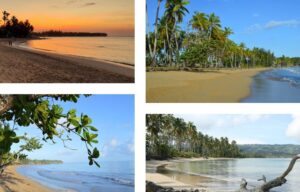
- Getting there: The nearest international airport to Las Terrenas is Samaná El Catey International Airport (AZS), which is approximately a 30-minute drive away. You can fly into this airport or into Santo Domingo’s Las Americas International Airport (SDQ) and take a bus or private transportation to Las Terrenas, which is about a 2.5 to 3-hour drive.
- Best time to visit: Las Terrenas has a tropical climate with warm temperatures year-round. The dry season, from November to April, is generally considered the best time to visit, as you’ll encounter less rainfall and more sunshine. However, even during the wetter months, Las Terrenas has a pleasant climate. Keep in mind that the town can get busier during the peak tourist season.
- Beaches: Las Terrenas is known for its stunning beaches with crystal-clear waters and soft, white sand. Playa Las Terrenas is the main beach in town and offers a wide range of water sports activities, beachfront restaurants, and vibrant beach bars. Playa Bonita, located just east of Las Terrenas, is another popular beach known for its beautiful scenery and calm waters.
- El Limón Waterfall: Take a trip to El Limón Waterfall, located a short distance from Las Terrenas. This majestic waterfall is surrounded by lush vegetation, making it a scenic and refreshing spot. You can hike to the waterfall through a tropical forest or choose to ride a horse for a more leisurely experience.
- Cosón Beach: Cosón Beach, located near Las Terrenas, is a pristine and tranquil beach that stretches for several kilometers. It offers a peaceful atmosphere, perfect for relaxation and long walks along the shore. You can also find beachfront restaurants where you can savor delicious seafood dishes.
- Whale watching: If you visit Las Terrenas between January and March, you have the opportunity to go whale watching in Samaná Bay. Humpback whales migrate to the bay during this time, and you can take a boat tour to observe these majestic creatures up close.
- Samaná Peninsula: Las Terrenas serves as an excellent base for exploring the Samaná Peninsula. You can visit the town of Samaná, renowned for its vibrant atmosphere and picturesque Malecón (boardwalk). From Samaná, you can take a boat tour to Cayo Levantado (Bacardi Island) or explore the stunning beaches of Playa Rincón and Playa Frontón.
- Local cuisine: Las Terrenas offers a diverse culinary scene with a variety of restaurants and cafes. Enjoy fresh seafood, Dominican specialties, and international cuisine. Don’t miss trying the local favorite dish, “la Bandera Dominicana,” which consists of rice, beans, meat (such as chicken or beef), and salad.
Search Posts
Latest posts
-
5 Mar, 2024
Why prohibit engine braking?
-
4 Mar, 2024
Can I accidentally miss the in-flight food?
Popular posts
-
5 Mar, 2024
Why prohibit engine braking?
-
5 Mar, 2024
How to avoid drinking vodka?